News & Insights
Rise of digital athletics: engineering for esports on university campuses
Salas O'Brien looks at the current trends in esports venues for universities and the complex engineering required for the adaptive reuse of existing space.
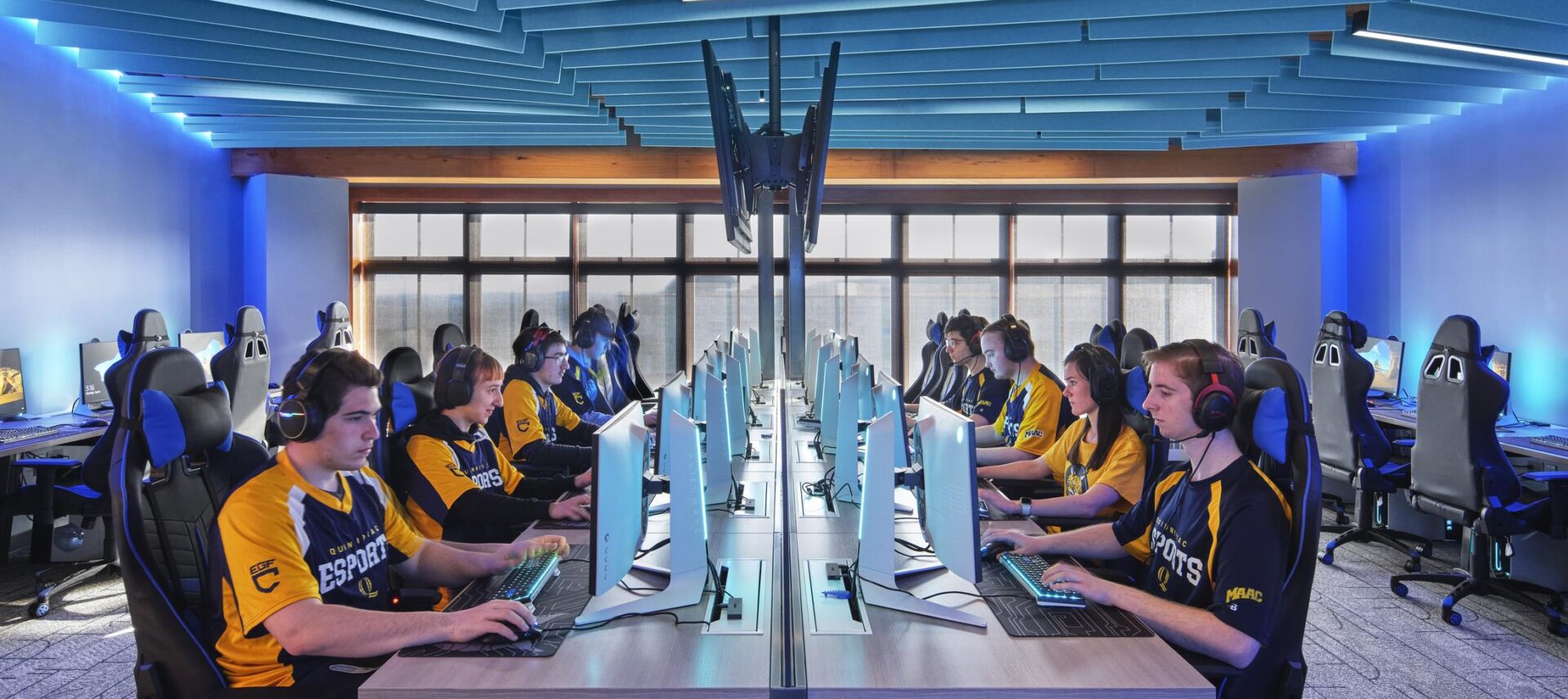
Support for competitive gaming—esports—is growing on college campuses. Over 200 universities currently offer varsity esports programs with coaching staff and scholarships. In 2023, the National Association of Collegiate Esports (NACE) teamed up with the Big East Conference for an official conference-based esports model.
As esports grows as a varsity sport, so does the need for venues that cover the needs of competitions, practice, and recreational support. This article dives into the trends and the engineering considerations for universities who plan to create dedicated esports venues on their campuses.
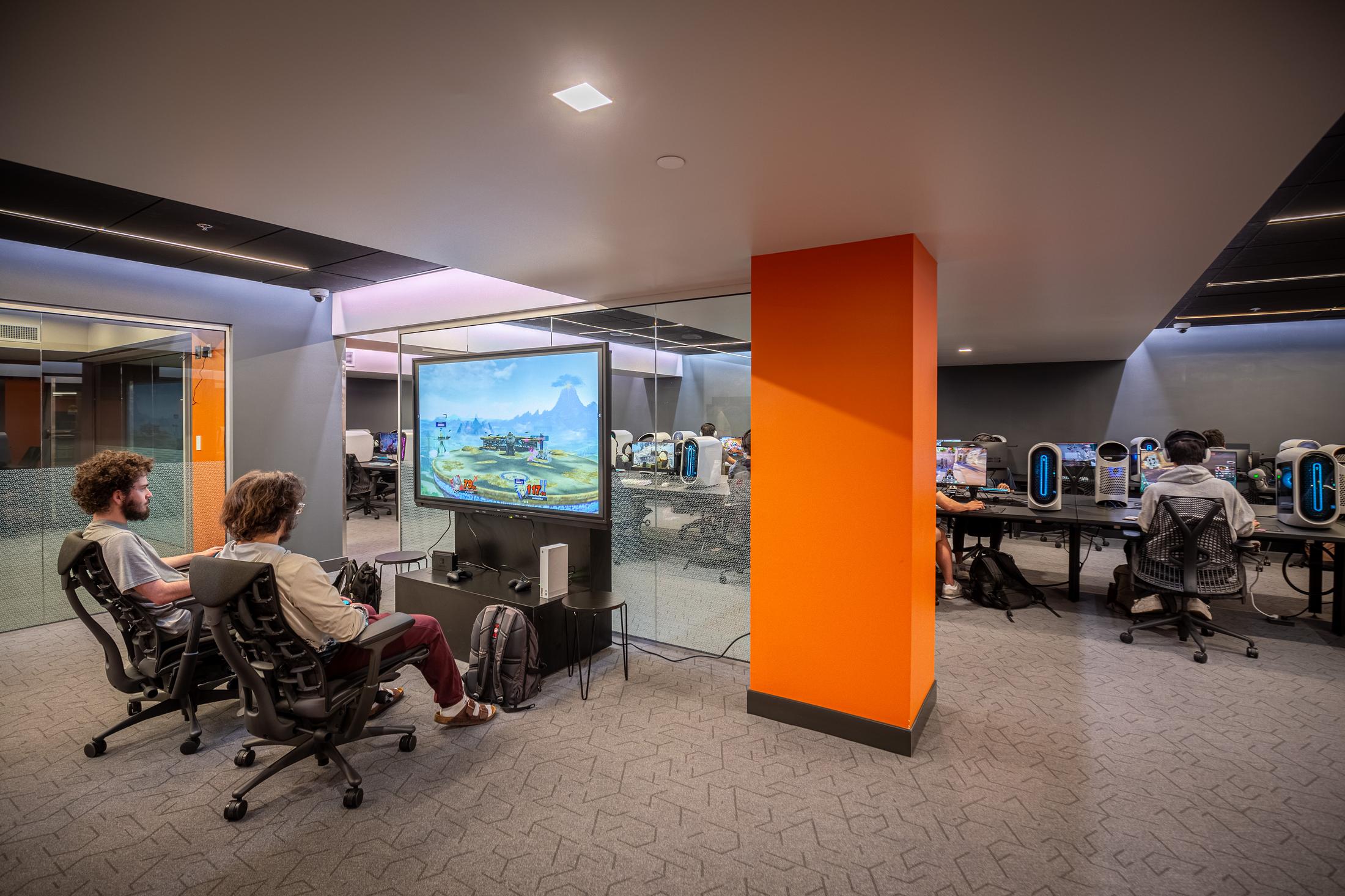
Current trends in university esports venues and facilities
Trend #1: Funding models drive adaptive reuse and multiuse facilities
Esports programs are often outside the traditional athletic department’s funding due to their unique needs and recent emergence. Funding primarily comes through student activities budgets supplemented by state contributions, commercial partnerships, and in-kind sponsorships.
This funding model is driving the current trend to convert underutilized campus spaces into esports venues. Often these esports facilities are required to be multipurpose, including use as classrooms for majors related to game development.
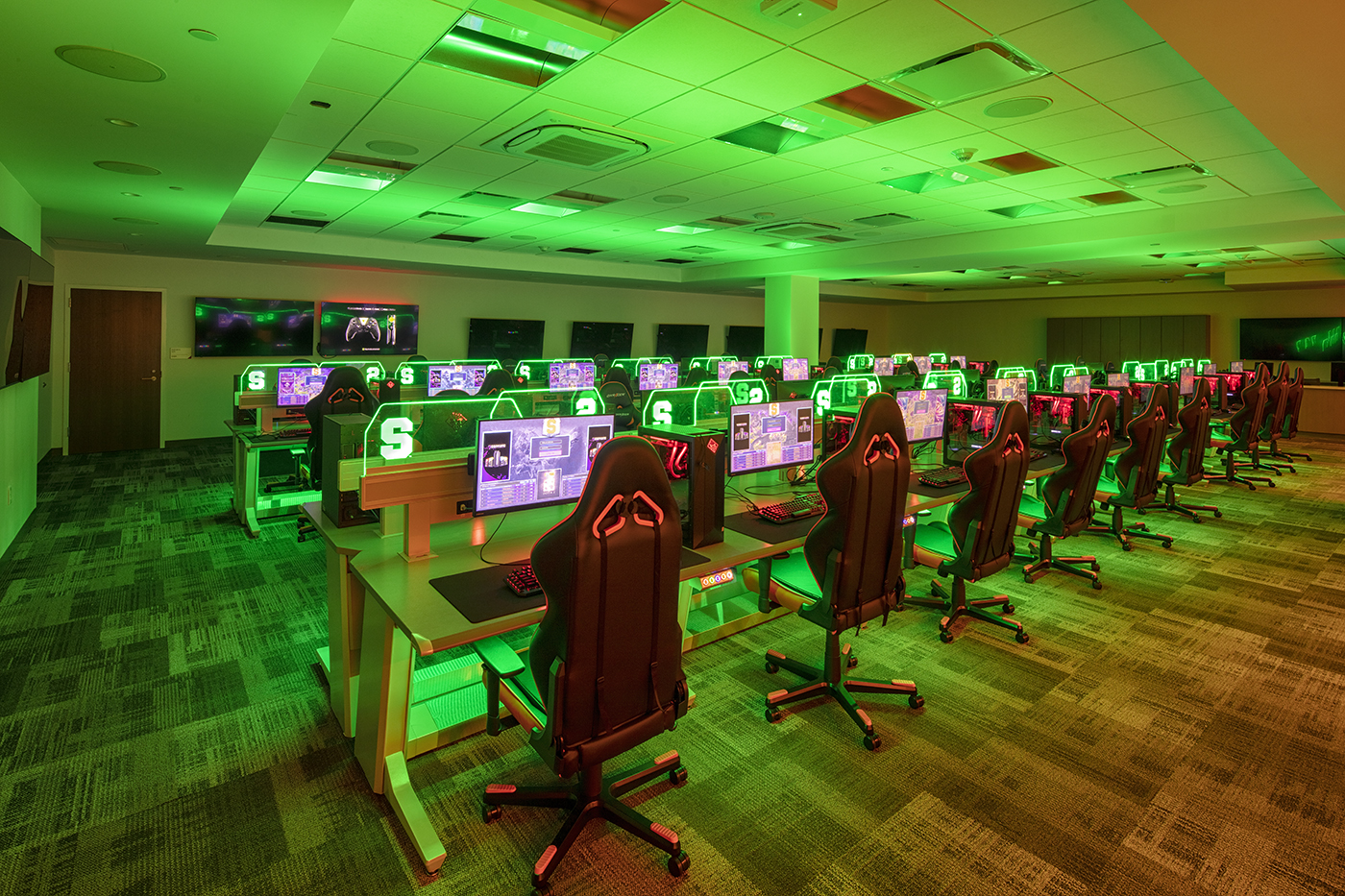
Trend #2: Esports venues are leveraged as powerful recruiting tools.
Esports facilities are emerging as potent tools in student recruitment and retention strategies. Small and mid-sized colleges are leveraging esports to set themselves apart, drawing in not only those interested in gaming but also students from various academic fields.
A notable insight from Sports Business Journal in 2018 highlighted that 62% of college-age League of Legends players were STEM majors, underscoring the appeal of esports across different disciplines. This trend indicates that esports is not just a niche interest but a versatile recruitment asset, appealing to a wide range of prospective students and enhancing the academic diversity on campuses.
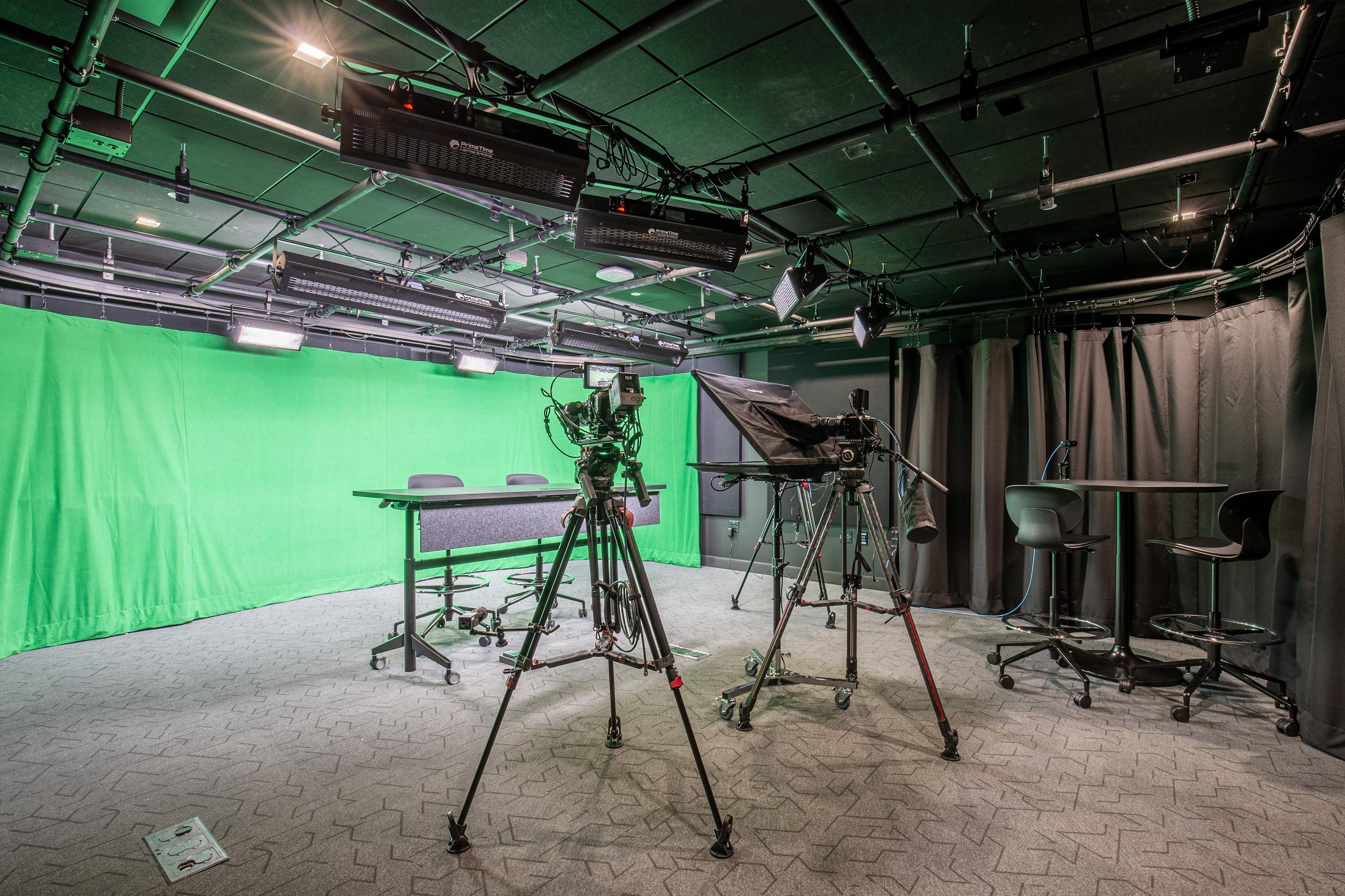
Trend #3: High-tech production capability creates learning opportunities
Esports venues rely on sophisticated technological infrastructure. Beyond the core array of gaming-specific computers and advanced network setups, these facilities are often equipped with comprehensive video production control rooms and dedicated casting booths for live commentary. Additionally, dynamic production lighting systems are installed to enhance the high-octane, event-driven atmosphere that is quintessential to esports.
This integration of cutting-edge technology is fostering interdisciplinary collaboration across university departments. The convergence of event management, IT, sports broadcasting, digital media production, and other content-centric disciplines within esports arenas is creating abundant opportunities for students. Such collaborative environments not only enhance the esports experience but also serve as practical learning platforms where students from diverse majors can apply their skills in real-world settings expanding their educational and professional horizons.
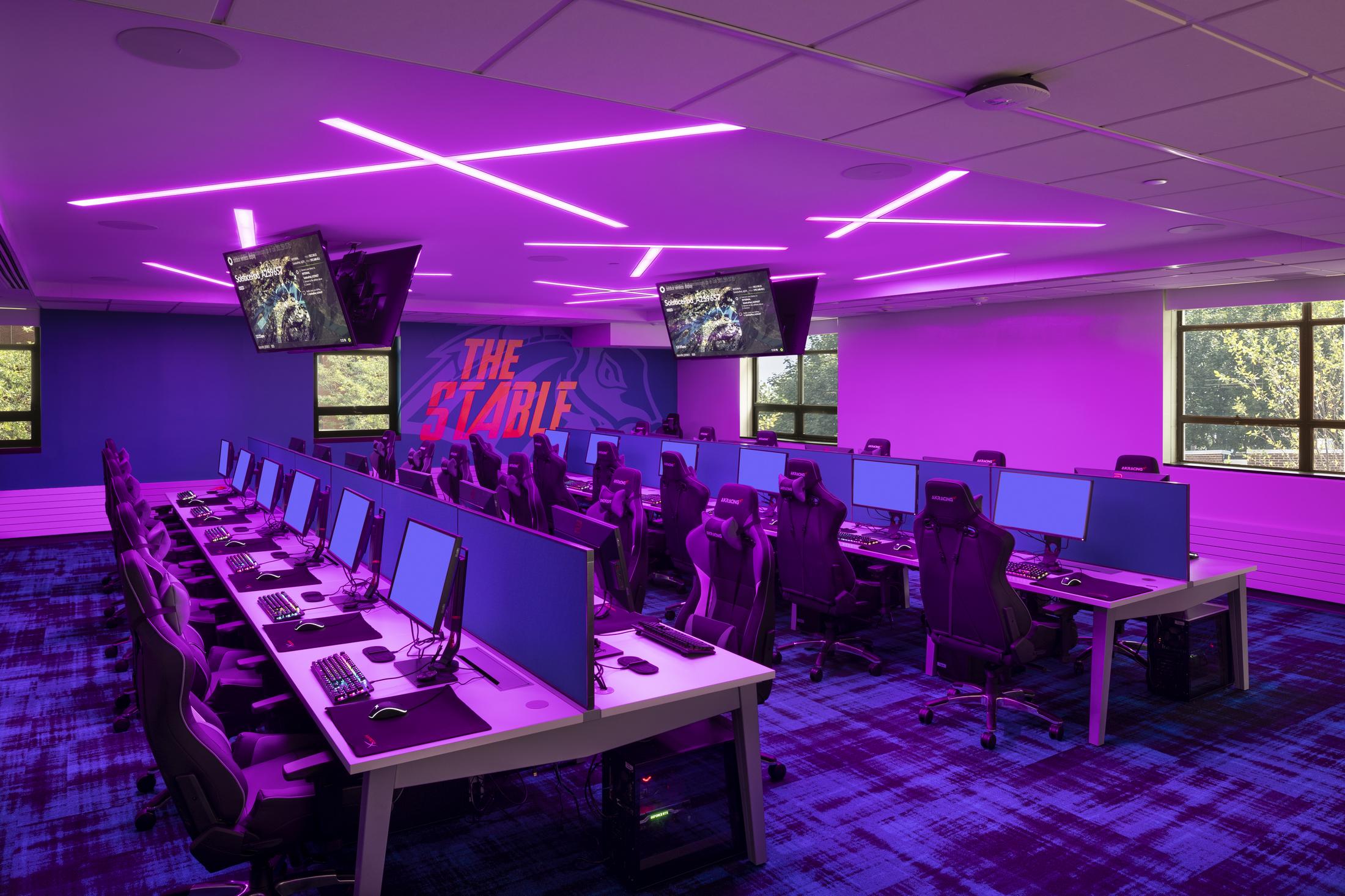
Trend #4: Strategic location of facilities to build community
Recognizing the issue of loneliness on college campuses, as highlighted by Gallup and the US Surgeon General, universities are strategically integrating esports facilities into their social fabric. By situating esports arenas in accessible, central locations on campus, universities are embedding these facilities within the everyday flow of student life. This deliberate placement fosters natural gathering points and encourages spontaneous social interactions among students. The esports spaces become vibrant community hubs, offering a communal space for not only gamers but also for those seeking social connection and engagement.
Engineering challenges in adaptive reuse of existing facilities for esports on university campuses
Esports venues are unique project types with their own engineering challenges. Here are some of the specialized design needs:
Hurdles in retrofitting existing buildings for esports
Each adaptive reuse of an existing spaces brings a unique set of preexisting conditions that must be navigated. For instance, essential infrastructure such as power and technology pathways may require specific routing to avoid existing structural elements like columns or floors that cannot be trenched. Low ceilings may pose challenges for both architectural and engineering designs for aesthetics, lighting, acoustic panels, and ductwork.
Let’s take the data room at the esports venue at the University of Texas as an example. The original plans were complicated by the presence of a water main line and a sprinkler system that cut right through the intended space. To safeguard the critical data equipment, engineers had to devise a solution that included installing a protective tray underneath the sprinkler line. This is a stark contrast to new builds where such elements would be strategically placed to avoid any proximity to sensitive areas like data rooms. This level of adaptability to pre-existing conditions requires creativity to result in high-performing spaces.
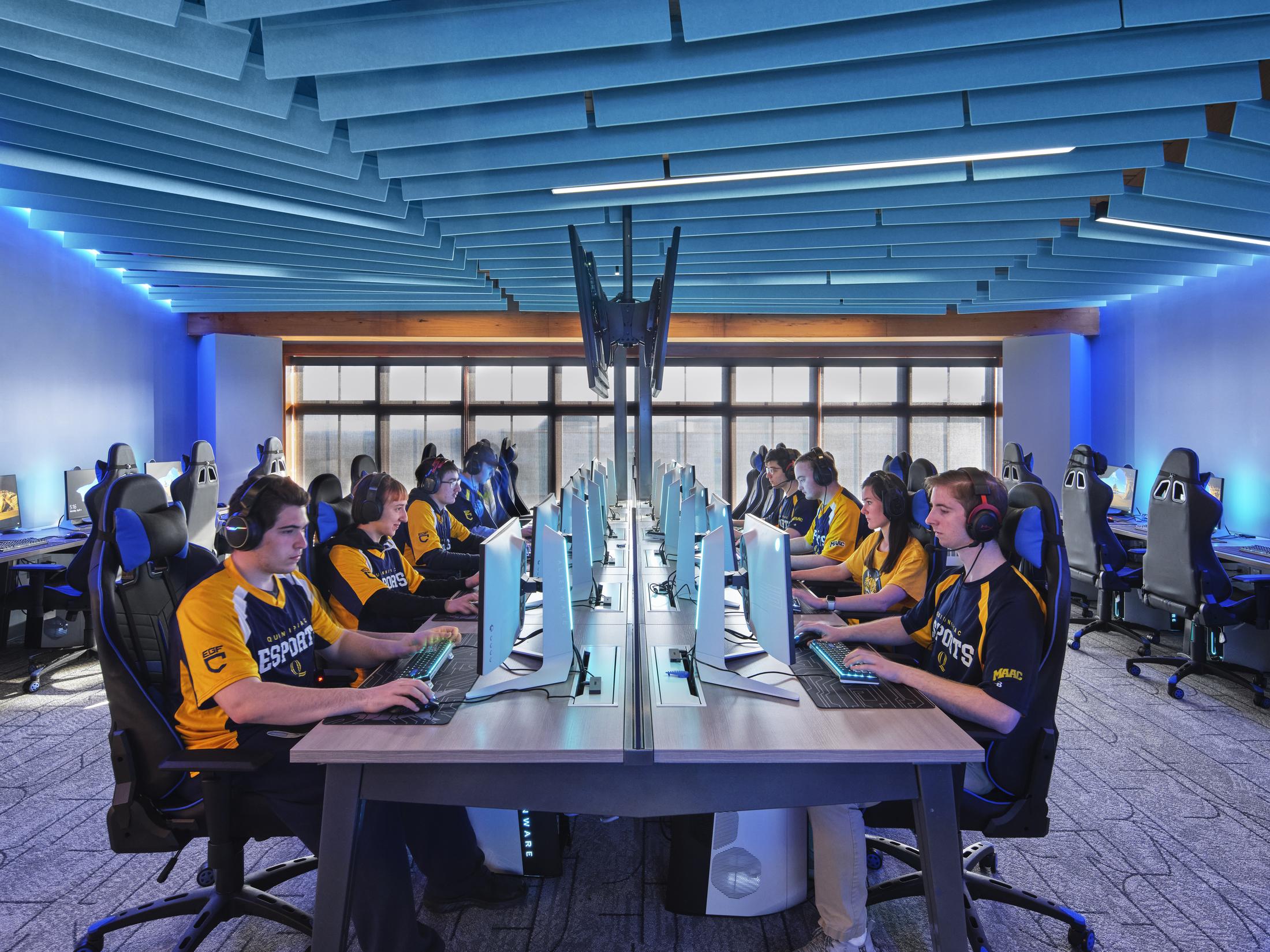
Engineering for streaming and production
Video production touches both the in-venue experience and streaming via Twitch, Discord, YouTube, and other platforms. This includes casting rooms with production lighting, green screens, and virtual sets where commentators can view and analyze gameplay without disruption. Video production control rooms include the broadcast switching needed to manage live feeds, replays, and graphics.
For spectators at the venue, image magnification (IMAG) systems display live action on large screens, ensuring everyone in the audience has a clear view of the gameplay. In addition, camera infrastructure is designed to provide POV for individual players.
Sound isolation is a particular challenge in adaptive reuse situations when there are difficult adjacencies. Student amenities like sports courts or bowling alleys are often located in the same building as esports venues, and isolation between spaces can be difficult to achieve without intent and investment.
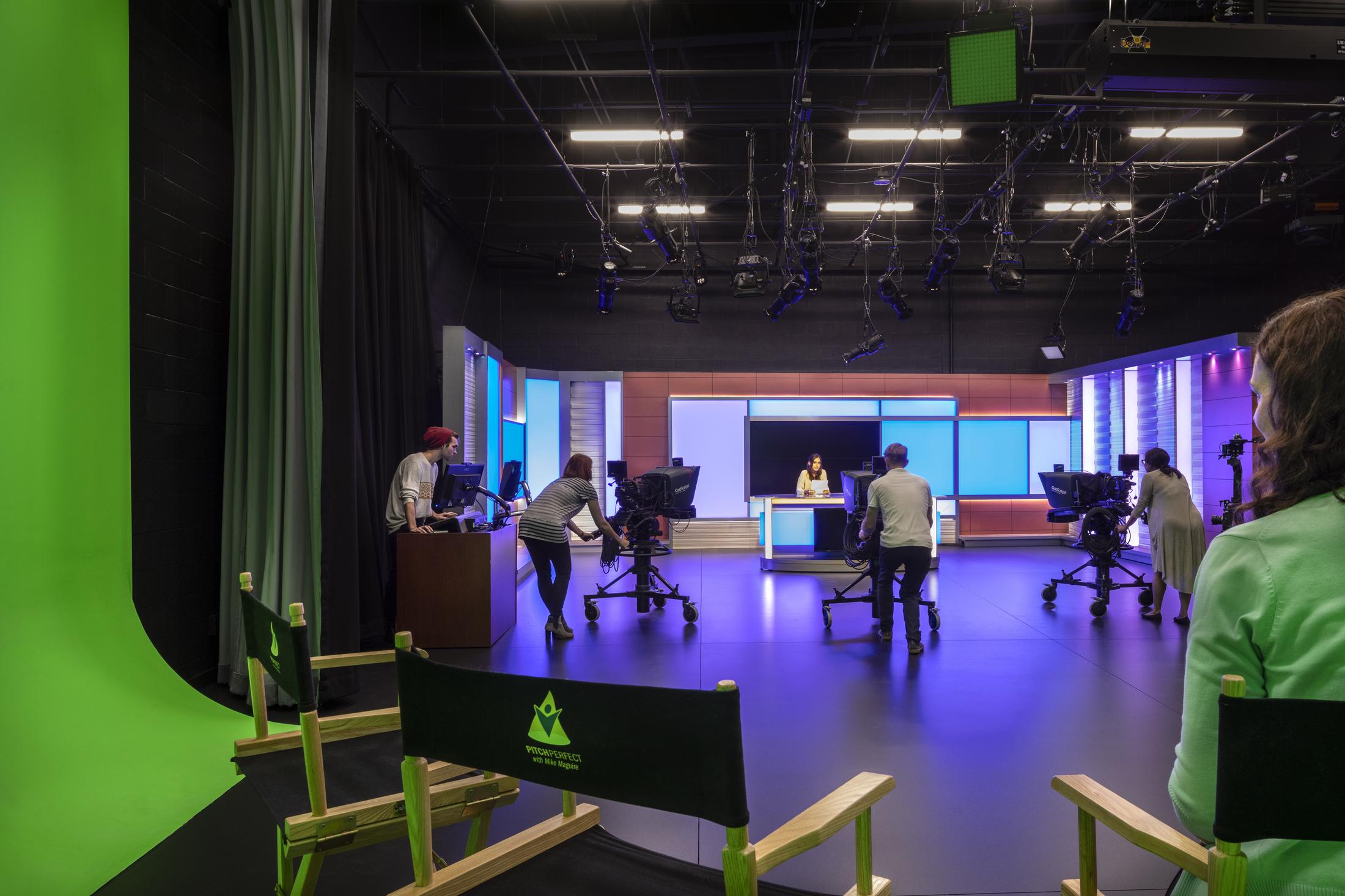
Upgrading data network infrastructure and wireless access
The necessity for upgrading hardwired connections is a common demand across the board in esports as they are essential for providing the low ping rates and high-speed connections that competitive gaming hinges on. Players in public gaming areas, and especially those on a varsity team, insist on these dedicated lines to ensure there are no lags or disruptions during gameplay.
In addition, the production side of esports—critical for broadcasting and live streaming of events—also requires numerous data runs to handle the high volume of digital traffic without a hitch. For context, at the University of Texas esports venue, there are 200 data runs in just 4400 square feet of space,.
Wireless access points also need to be strategically placed to ensure consistent, high-quality connectivity to support the volume of mobile devices in the space for texting, posting, and personal streaming.
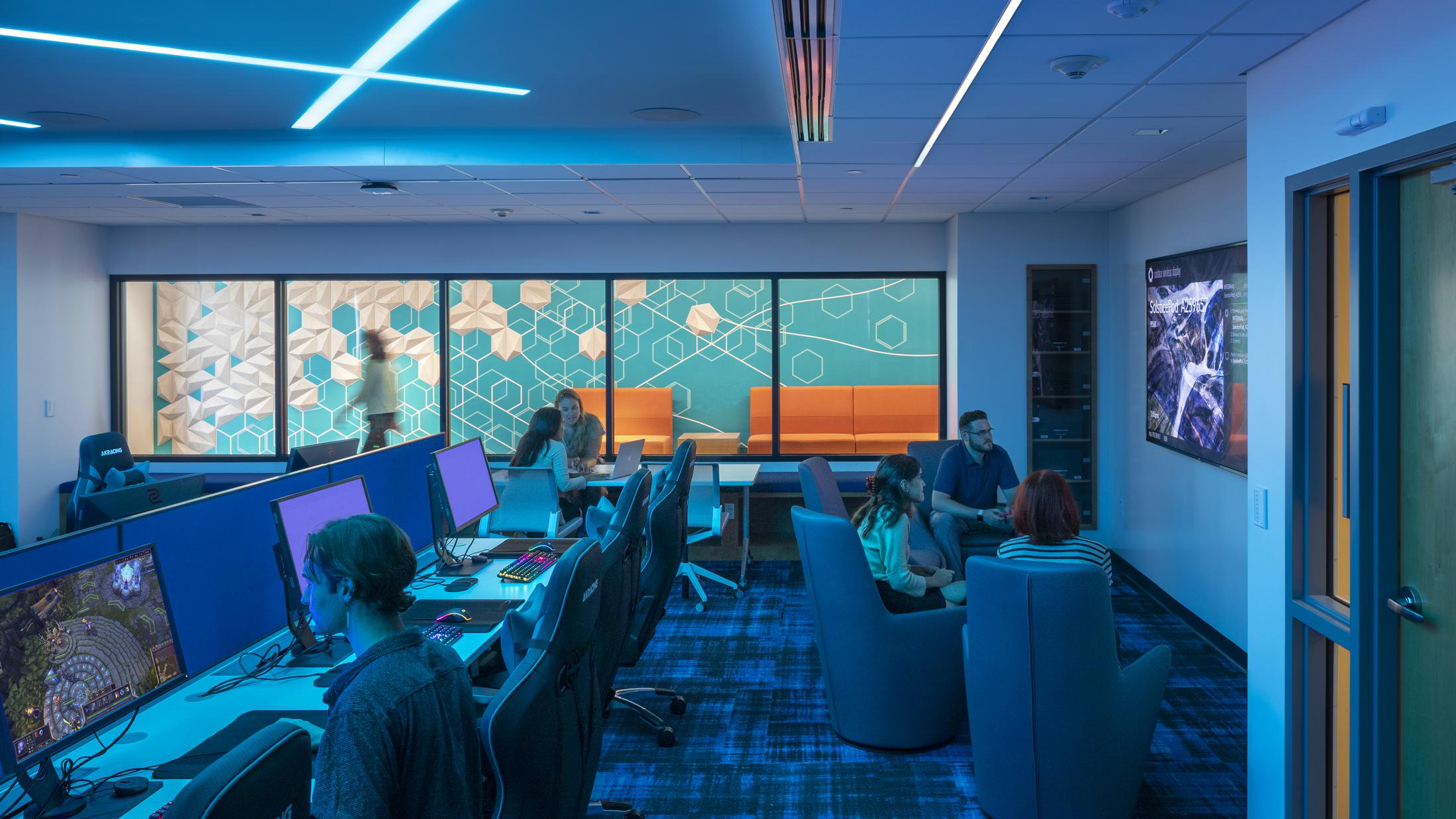
Using lighting design to create a high-tech feel
Lighting design is a pivotal element in crafting the high-tech ambiance essential to esports environments. By integrating programmable LED lighting that can alter hues and brightness, these spaces are imbued with a vibrant atmosphere that heightens the experience for both competitors and spectators.
Collaboration between architects and lighting designers is crucial in orchestrating this transformation. They utilize color-changing cove style accent lighting to tailor the mood of the space, creating a customizable ambiance. This can even include a theatrical in-rack lighting console, enhancing the venue’s capability to support a wide range of events.
At the professional level, the lighting system becomes an extension of the game itself. It is programmed to respond to in-game commands and events, such as highlighting players with different colors or altering the room’s environment in real time to reflect gameplay dynamics. With the rapid pace of esports, these triggers are automated, since manual operation cannot match the game’s speed. As esports continues to evolve, we can expect such sophisticated lighting automation to become a standard feature in university-level esports venues, adding to the immersive experience of the game.
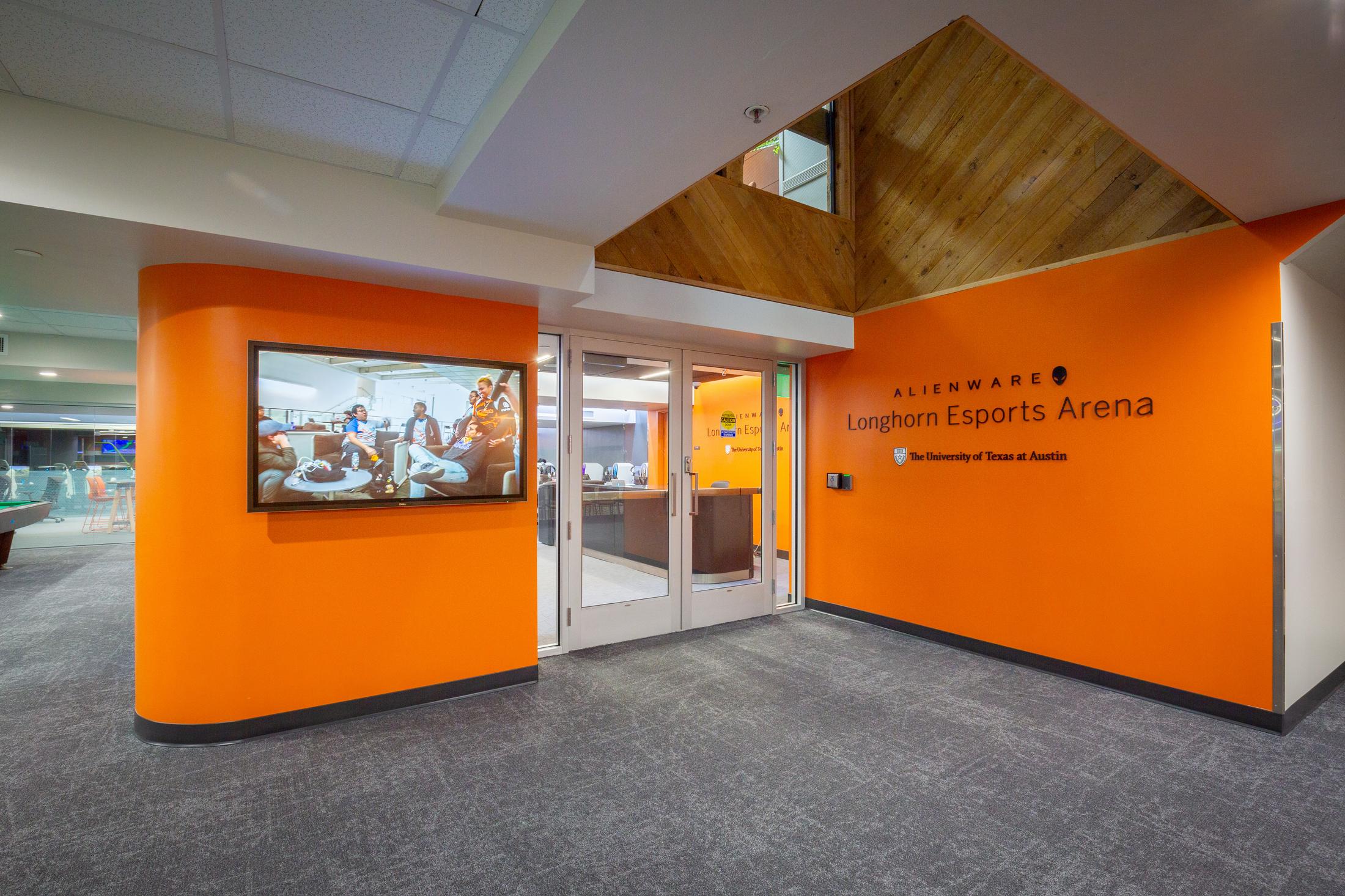
Upgrades to electrical and HVAC Systems
High-performance computers and high room occupancy generate significant heat, making HVAC upgrades a necessity in esports venues. Efficient cooling systems are required to maintain a comfortable temperature and ensure electronic equipment operates optimally. This often means integrating more specialized air conditioning units to improve ventilation for gaming and spectator areas.
Reflecting on the power demands, it’s important to note the stark difference in energy consumption between standard computing equipment and the high-performance gaming rigs used in esports. While most laptops and home computers operate with a 100 – 300-watt power supply, gaming computers designed for optimal performance are often equipped with power supplies that exceed 1000 watts. This not only has implications for electrical systems, which must be sized to handle the increased load, but also for the increased HVAC equipment requirements.
Each of these engineering challenges represents a critical aspect of creating functional and exciting esports venues. From adapting older structures to installing cutting-edge technology, these challenges must be met with innovative solutions to ensure the success of these modern gaming arenas.
How Salas O’Brien can help universities achieve their esports venue goals
Salas O’Brien provides an integrated approach to mechanical, electrical, plumbing, fire protection (MEP/FP), structural, technology, acoustic, and lighting design for esports venues. We are deeply experienced working with architects and universities on both adaptive reuse and new construction projects designed to meet the unique needs of an esports program.
Contact us to talk about your project or reach out to one of our contributors below.
For media inquiries on this article, reach out to Stacy Lake.

Ben Cating, LEED AP
Ben Cating is an accomplished engineer with 20 years’ experience in the design and optimization of professional and collegiate sports facilities. A graduate of Louisiana Tech, Ben holds a BA in electrical engineering. He has been instrumental in several groundbreaking projects that have redefined the role of video and production in stadia and arenas. Ben serves as a Senior Vice President at Salas O’Brien. Contact him at [email protected].

Richard Loveland, PE
Richard Loveland has nearly 24 years of design and management experience. His portfolio includes many successful projects for public and private clients throughout the Northeast and across the country ranging from Division I athletics, student recreation centers, and classroom buildings to laboratories, office fit-outs, manufacturing facilities, and new medical centers. Rich has a Bachelor of Science in electronics engineering from the University of Hartford. He serves as a Senior Vice President at Salas O’Brien. Contact him at [email protected].

Dan Schoedel, MET, LEED AP
Dan Schoedel is an entertainment lighting designer whose experience bridges theatrical and concert venues, arenas, stadia, and other spaces where people gather to share an experience. A specialist in immersive environments, Dan works at the crossroads where new technologies merge to create innovative experiences. Dan has a Masters in Entertainment Technology from Carnegie Mellon University and serves as a Senior Consultant at Salas O’Brien. Contact him at [email protected].

Adam Levine, PE
Adam Levine leads teams that cater to clients with demanding performance requirements. Boasting an impressive client roster that features industry leaders such as NASA, EA Sports, and the University of Central Florida, Adam has a proven track record of delivering high-impact outcomes. He serves as a Principal at Salas O’Brien. Contact him at [email protected].

